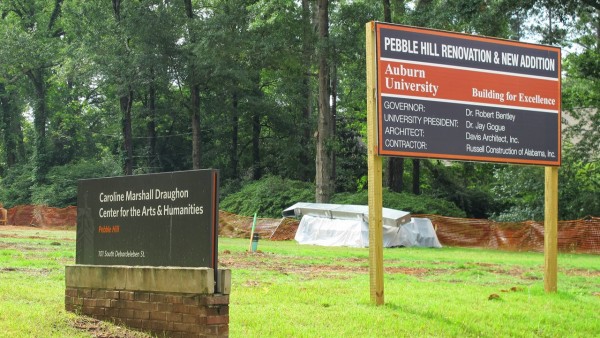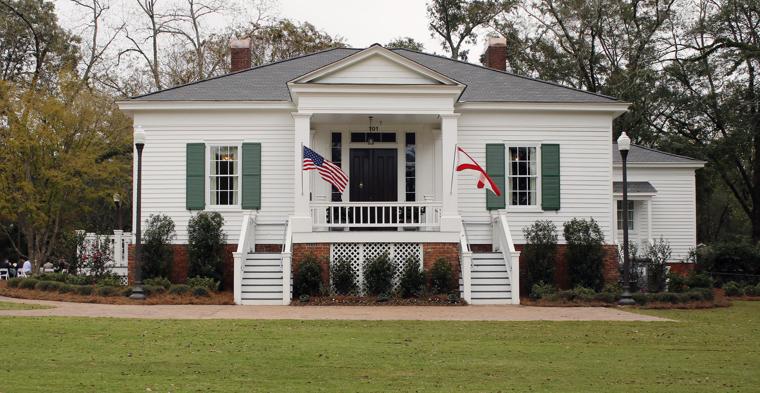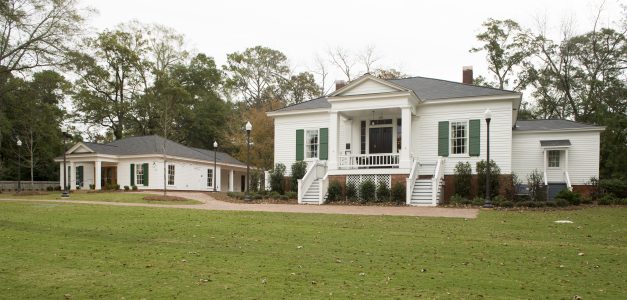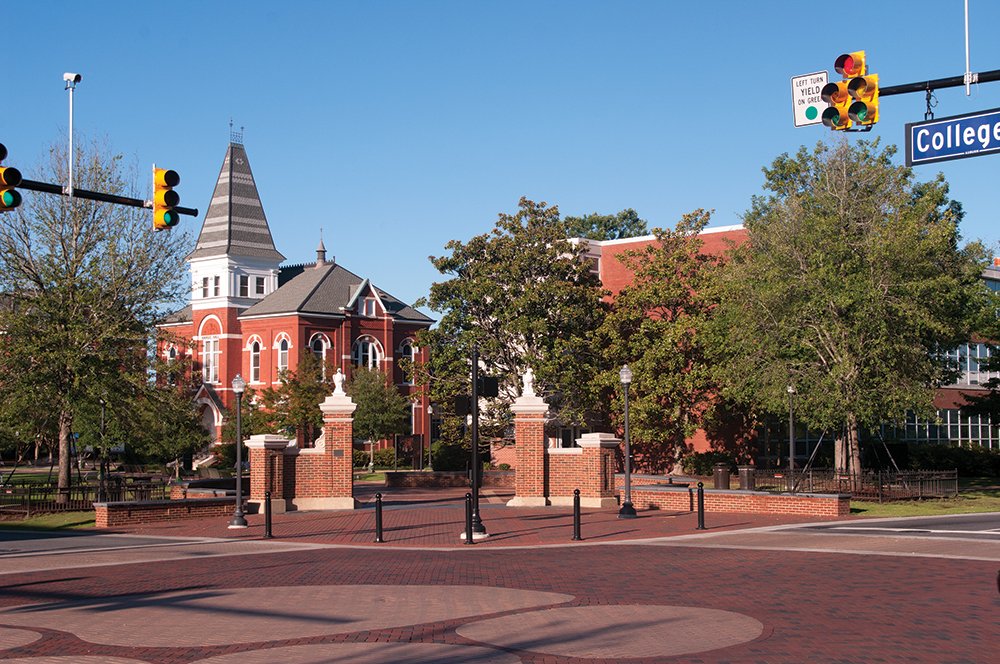Pebble Hill Now Serves as a Museum
Pebble Hill, which is also known as the Scott-Yarbrough House, is an antebellum (pre-civil war) cottage that is located in Auburn, Alabama.
It is listed on the National Register of Historic Places.
It is still in use, and it currently serves as the location of the Caroline Marshall Draughon Center for the Arts and Humanities, in the College of Liberal Arts at Auburn University.
The History of Pebble Hill
 Pebble Hill Renovations
Pebble Hill RenovationsIn 1847 Colonel Nathaniel Scott built what is now known as Pebble Hill, at the center of a 100-acre plantation.
The home was built in the traditional Greek revival style with hand hewn heart of the pine floors, joints, and rafters that were held together by wooden pegs.
During Wilson’s raid in the Civil War, he looted the home but was unable to find anything of value in the home.
The reason for this was simple; Colonel Scott hid them.
With knowledge that the raid was coming, Colonel Scott took his valuables and hid them in s spring on his property, so the Union troops could not find them.
However, by the end of the Civil War, Mr. Scott was forced to sell the home and it saw several different owners in the decades that followed.
In the year 1912, the home was purchased Cecil Yarbrough, a state representative and a three-time mayor of the city of Auburn.
The home stayed in the Yarbrough family until the year 1974, when it was purchased by the Auburn Heritage Association.
On May 16, 1975, it was placed in the National Register of Historic Places.
In the year 1985, the property was donated to the University of Auburn, which immediately moved its Center for Arts and Humanities to the home.
The Center’s primary mission is to work with students, the faculty, the community, as well as outside consultants to both document and preserve the overall history of Pebble Hill.
Currently Pebble Hill functions as a museum and when combined with an adjacent building, it hosts a variety of both private and public events.
The offices of the Scott-Yarborough House that constitute Pebble Hill, sit on land that originally belonged to the Creek Nation.
Pebble Hill
 The Front of Pebble Hill
The Front of Pebble HillPebble Hill is a representative of antebellum (pre-civil war) plantation architecture, located in east Alabama.
It was constructed in 1846 by planter (a farmer who owned land) Nathanial J. Scoot and his wife Mary, in what used to be Macon County.
The home features a square one-story frame dwelling with a hipped pitched roof that sits on a brick foundation.
The entrance, which is reached by a pair of matching stairs, is set in a small, raised portico that is supported by columns and flanks.
There are two tall windows on either side.
The back of the home features a full width porch that is also supported by columns.
The front and backs door of the home both open into a central hallway, that divides the home with two equal sized rooms.
There is a stairway that leads to the attic that was originally used as a servant’s room, but later was used as a bedroom for Auburn students.
The high ceilings in the home as well as the central hallway help to promote air flow, to help offset the very hot Alabama summers.
The home originally was in a small complex of buildings, and one of the originals is now attached to the southeast corner of the main house.
A second building was built in 2015 for event spaces and offices.
The Attractions of Pebble Hill
 Adjacent House To Pebble Hill
Adjacent House To Pebble HillOne of the first main attractions within the house museum is what is referred to as ‘the McKenney and Hall lithograph portrait gallery”.
This includes original prints of the delegation of Creek Indian leaders who traveled to Washington D.C. in 1825, to negotiate terms of peace.
However, they also went there to regain the title to their lost land, in the Treaty of Indian Springs.
Thomas McKenney, who was the head of Indian Affairs in the John Quincy Adams administration, was the chief contact for the delegation.
He was in charge of archiving portraits of the Native Americans who traveled to the city.
The portraits were painted in the studio of artist Charles Bird King.
After Andrew Jackson was elected, he fired most of the Adams administration, including McKenney.
The home also has a very rare, numbered Steinway piano that was built in New York City in June of 1858.
It was donated to the house by John D. Ford.
There are also numerous donations of furniture, artwork, decorative antiques, pottery, as well as tools.
Some of their provenance dates back to the 19th and early 20th century.
The history of Pebble Hill makes it one of the places that need to go on your” lists to see” during you Auburn Day trips.
References
http://www.encyclopediaofalabama.org/article/h-4043

Alabama Gift Store
Numerous Items for You and Your Family to Enjoy
See it here at the Gift Store
Copyright 2019-2023 Alabamabackroads.com
All Rights Reserved



















